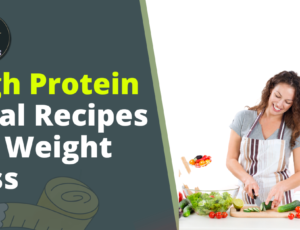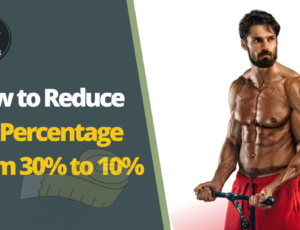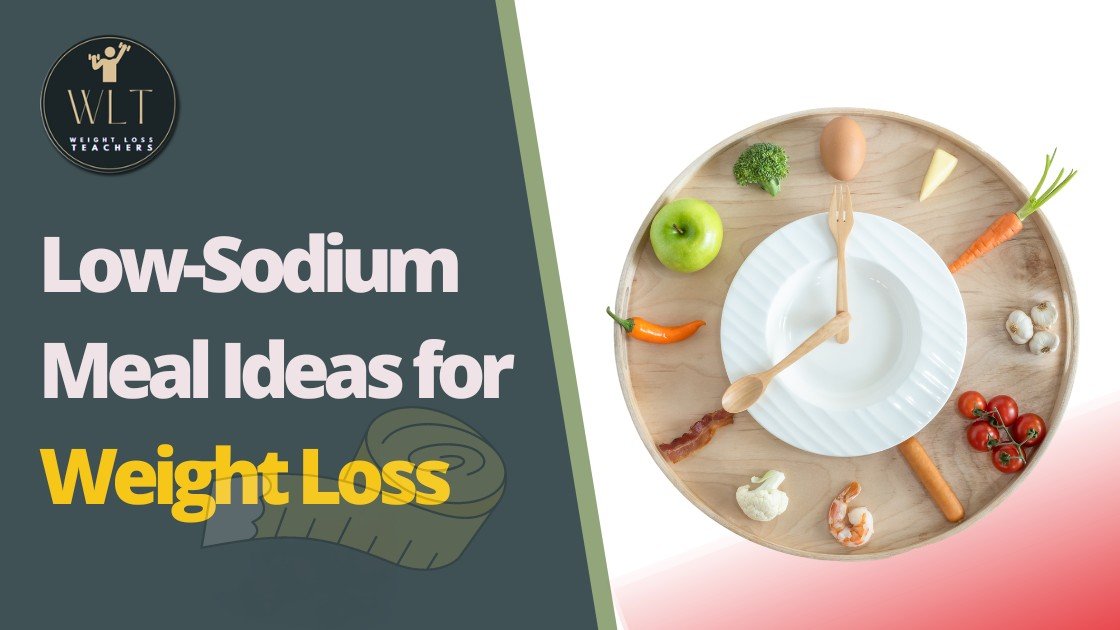
Low-Sodium Meal Ideas for Weight Loss
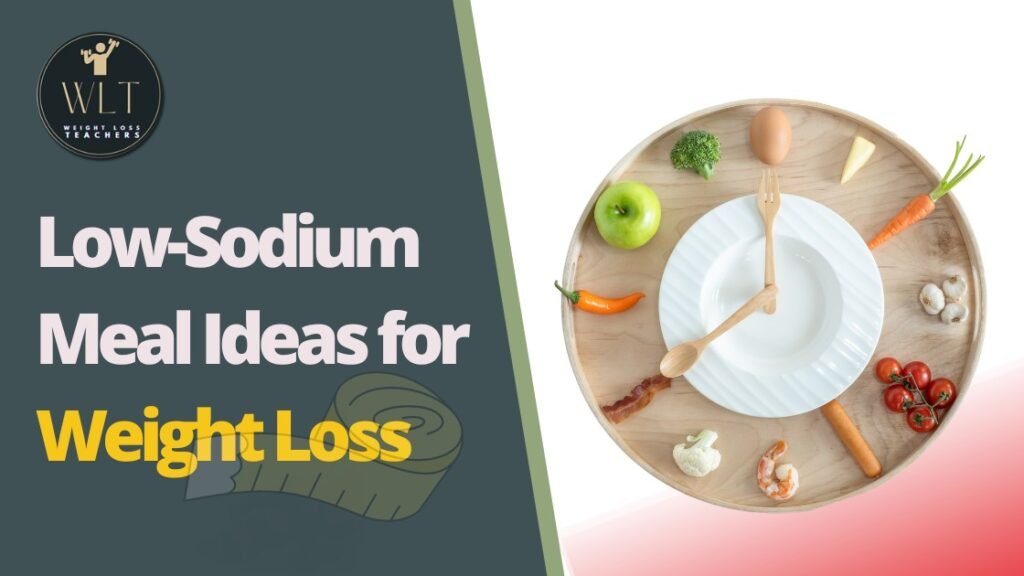
The consumption of too much sodium can lead to various health problems, including high blood pressure, heart disease, and stroke.
Table of Contents
Introduction
Therefore, reducing sodium intake is an important part of maintaining good health. Moreover, cutting back on salt is beneficial for people who are trying to lose weight. High-sodium diets are often high in calories, which can lead to weight gain. Thus, incorporating low-sodium meal ideas in your diet plan can help with both sodium reduction and weight loss.
In this article, we will discuss the benefits of a low-sodium diet, how to reduce sodium intake, and some delicious low-sodium meal ideas that you can try for weight loss.

Benefits of a Low-Sodium Diet

A low-sodium diet offers a myriad of health benefits that extend far beyond simply reducing the saltiness of your meals. Embracing this dietary choice can positively impact your overall well-being in several ways.
2.1 Reduced Risk of Heart Disease
First and foremost, one of the most significant advantages of adopting a low-sodium diet is the reduced risk of heart disease. Excessive sodium intake can lead to elevated blood pressure levels, which in turn, is a leading cause of cardiovascular issues. By curbing your sodium consumption, you can effectively lower your blood pressure, ultimately diminishing the likelihood of heart disease development. This simple dietary adjustment can be a crucial step in safeguarding your heart health.
2.2 Better Kidney Health
Furthermore, a low-sodium diet contributes to better kidney health. The kidneys play a pivotal role in maintaining a delicate sodium balance within the body. When sodium intake is high, the kidneys must work overtime to regulate it, potentially causing strain and damage over time. By adhering to a low-sodium diet, you ease this burden on your kidneys, reducing the risk of kidney damage and promoting optimal renal function.
2.3 Improved Bone Health
Another notable benefit is improved bone health. A diet rich in sodium can lead to increased calcium excretion through urine. Over time, this calcium loss can result in decreased bone density, which is a precursor to osteoporosis and brittle bones. By reducing sodium intake, you can help maintain healthy bone density, ensuring your skeletal system remains strong and resilient.
2.4 Reduced Risk of Stomach Cancer
Lastly, a low-sodium diet can also reduce the risk of stomach cancer. Scientific studies have linked excessive sodium consumption to an elevated risk of stomach cancer. By moderating your sodium intake, you provide your stomach with a healthier environment, potentially lowering your susceptibility to this life-threatening disease.
How to Reduce Sodium Intake

Reducing sodium intake is a wise and health-conscious decision, but it doesn’t mean you have to sacrifice flavor in your meals. By making some thoughtful choices and adopting new culinary techniques, you can maintain delicious dishes while taking steps to reduce your sodium intake. Here are some effective strategies for lowering your sodium intake without compromising on taste:
- Embrace Herbs and Spices: Herbs and spices are a treasure trove of flavors that can elevate your dishes without the need for salt. Experiment with aromatic herbs like basil, thyme, rosemary, or oregano, and spices such as cumin, paprika, or turmeric. These natural seasonings can add depth and complexity to your meals.
- Leverage Lemon and Lime Juice: The zesty tang of lemon and lime juice can infuse your dishes with bright, refreshing flavors. Squeeze these citrus fruits over salads, fish, or grilled vegetables to enhance taste without resorting to sodium.
- Opt for Fresh Foods: Fresh foods are generally low in sodium compared to their processed counterparts. Prioritize fresh fruits and vegetables, whole grains, and lean proteins like poultry, fish, and legumes. These options not only contribute to a healthier diet but also offer a wealth of natural flavors.
- Become a Label Detective: When grocery shopping, diligently read food labels to assess the sodium content of various products. Look for items that are labeled as “low-sodium” or “no added salt.” This simple practice can help you make informed choices and select products that align with your sodium reduction goals.
- Steer Clear of Salty Snacks: Salty snacks, such as potato chips and pretzels, are notorious for their high sodium content. Opt for healthier alternatives like air-popped popcorn, unsalted nuts, or fresh fruit when you need a satisfying snack. These options provide flavor and nutrition without the excess sodium.
- Cook from Scratch: Preparing meals from scratch gives you full control over the ingredients, including salt. By cooking your dishes at home, you can reduce or eliminate added salt entirely. Experiment with homemade sauces, marinades, and dressings to infuse your dishes with unique and savory flavors.
- Rinse Canned Foods: When using canned vegetables or beans, rinse them thoroughly under cold water to remove excess sodium from the canning liquid. This simple step can significantly reduce the sodium content of these ingredients.
Gradual Reduction: If you’re accustomed to a high-sodium diet, consider reducing your salt intake gradually. Over time, your taste buds will adapt to the new, lower-sodium flavors, making the transition smoother.
Disclaimer: The information provided in this article is for educational purposes only and should not be considered as a substitute for medical advice. Consult a healthcare professional before implementing any home remedies or making significant changes to your lifestyle.
Low-Sodium Meal Ideas for Weight Loss
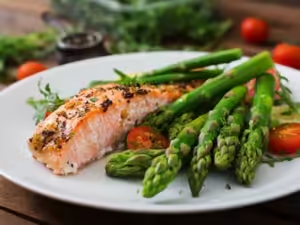
Maintaining a low-sodium diet while aiming for weight loss can be a rewarding and healthy journey. By choosing the right ingredients and incorporating creative meal ideas, you can enjoy delicious and satisfying dishes that support your weight loss goals. Here are some delectable low-sodium meal ideas to help you on your weight loss journey:
4.1 Grilled Chicken with Roasted Vegetables:
- Grilled chicken is a lean and protein-packed choice that’s naturally low in sodium. Season it with a blend of your favorite herbs and spices to enhance its flavor.
- Pair the chicken with a medley of roasted vegetables. You can roast vegetables like bell peppers, zucchini, carrots, and cherry tomatoes for a colorful and nutritious side.
- Drizzle a touch of olive oil and sprinkle herbs like rosemary, thyme, and garlic powder over the chicken and veggies for added depth of flavor.
4.2 Baked Salmon with Brown Rice and Steamed Broccoli:
- Salmon is not only rich in omega-3 fatty acids but is also naturally low in sodium, making it a great choice for weight loss.
- Bake the salmon with a dash of lemon juice and a sprinkle of dill or parsley to accentuate its natural taste.
- Serve it alongside a portion of brown rice and steamed broccoli for a well-balanced and filling meal.
4.3 Turkey Chili:
- Ground turkey is a lean source of protein suitable for weight loss. Create a hearty and flavorful chili using lean ground turkey as the base.
- Avoid store-bought chili seasoning mixes, which can be high in sodium. Instead, rely on fresh herbs and spices like cumin, chili powder, paprika, and oregano to season your chili.
- Incorporate a variety of colorful beans, such as kidney beans, black beans, and pinto beans, along with diced tomatoes, onions, and bell peppers for added flavor and texture.
4.4 Vegetable Stir-Fry:
- A vegetable stir-fry is a quick and satisfying low-sodium option. Use an assortment of fresh vegetables like bell peppers, broccoli, carrots, and onions.
- Season the stir-fry with aromatic ingredients like garlic and ginger, and add a splash of low-sodium soy sauce or tamari for a hint of umami flavor.
- Serve it with a lean protein source like tofu or skinless chicken breast for a complete and nutritious meal.
4.5 Egg White Omelet with Vegetables:
- Start your day with a nutritious and low-sodium breakfast by preparing an egg white omelet loaded with colorful vegetables.
- Sautee vegetables such as spinach, bell peppers, mushrooms, and onions in a non-stick skillet with a small amount of olive oil.
- Pour whipped egg whites over the vegetables and cook until set. Fold the omelet in half and garnish with fresh herbs like chives or parsley.
4.6 Quinoa Salad with Grilled Chicken and Vegetables:
- Quinoa is a wholesome whole grain that’s naturally low in sodium. Create a refreshing salad by mixing cooked quinoa with grilled chicken and a medley of fresh vegetables.
- Incorporate ingredients like cherry tomatoes, cucumbers, and creamy avocado for a burst of flavor.
- Prepare homemade vinaigrette using lemon juice, extra-virgin olive oil, and a blend of your favorite herbs, such as basil, thyme, or oregano, to dress the salad.
4.7 Lentil Soup:
- Lentil soup is a satisfying and low-sodium meal that’s rich in fiber and plant-based protein.
- Season the soup with an assortment of fresh herbs and spices, like bay leaves, cumin, coriander, and smoked paprika.
- Add nutritious vegetables such as carrots, celery, and onions for extra flavor and texture.
4.8 Zucchini Noodles with Turkey Meatballs:
- Zucchini noodles, or “zoodles,” make for a low-carb and low-sodium alternative to traditional pasta.
- Prepare turkey meatballs using lean ground turkey, breadcrumbs, egg whites, and seasonings like garlic, parsley, and black pepper.
- Create a homemade tomato sauce using fresh tomatoes, basil, and a touch of olive oil to coat the zucchini noodles and meatballs.
4.9 Grilled Shrimp Skewers with Vegetable Kabobs:
- Grilled shrimp is a fantastic low-sodium protein option that cooks quickly and is bursting with flavor.
- Assemble vegetable kabobs using a variety of fresh vegetables like zucchini, squash, and colorful bell peppers.
- Season the skewers with a mix of herbs and spices, such as lemon zest, dill, and a pinch of cayenne pepper, for a delightful kick.
4.10 Greek Yogurt Parfait with Fresh Fruit and Granola:
- Greek yogurt is a high-protein, low-sodium breakfast choice that can keep you feeling full and satisfied.
- Layer Greek yogurt with fresh fruits like strawberries and blueberries to add natural sweetness and antioxidants.
- Top it off with a sprinkle of low-sodium granola for a satisfying crunch.
Incorporating these low-sodium meal ideas into your weight loss journey not only helps you achieve your health goals but also ensures that your taste buds are continually delighted with a variety of flavors and textures. Remember that portion control, regular physical activity, and overall dietary balance are essential components of successful weight management. Enjoy these delicious meals while working towards your weight loss goals, and savor the journey to a healthier you.
FAQs (Frequently Asked Questions)
Q1. Why is reducing sodium intake important for overall health?
A1. Reducing sodium intake is essential because excessive sodium consumption can lead to health problems like high blood pressure, heart disease, and stroke. It’s crucial for maintaining good health and preventing these conditions.
Q2. How does a low-sodium diet reduce the risk of heart disease?
A2. A low-sodium diet helps reduce the risk of heart disease by lowering blood pressure. High sodium intake can lead to elevated blood pressure levels, a significant risk factor for cardiovascular issues.
Q3. Can a low-sodium diet improve kidney health?
A3. Yes, adopting a low-sodium diet can contribute to better kidney health. When sodium intake is high, the kidneys work harder, which can potentially lead to kidney damage. Reducing sodium eases the workload on the kidneys and promotes optimal renal function.
Q4. What role does a low-sodium diet play in bone health?
A4. A diet high in sodium can increase calcium excretion through urine, leading to decreased bone density. A low-sodium diet helps maintain healthy bone density and reduces the risk of conditions like osteoporosis.
Q5. How does reducing sodium intake lower the risk of stomach cancer?
A5. Excessive sodium consumption has been linked to an increased risk of stomach cancer. By moderating sodium intake, you create a healthier environment in the stomach, potentially reducing the risk of this disease.
Q6. Is it possible to reduce sodium intake without sacrificing flavor in meals?
A6. Yes, it is entirely possible to reduce sodium intake while maintaining delicious flavors in your meals. Herbs, spices, and other seasoning alternatives can add depth and complexity to your dishes without relying on salt.
Q7. What are some creative ways to reduce sodium intake in cooking?
A7. You can use lemon and lime juice for tangy flavors, opt for fresh ingredients over processed foods, become a label-savvy shopper, choose healthier snacks over salty ones, and experiment with homemade sauces and dressings.
Q8. Are there any specific herbs and spices that work well as sodium alternatives?
A8. Yes, there is a wide range of herbs and spices you can use, including basil, thyme, rosemary, oregano, cumin, paprika, and turmeric. These natural seasonings add robust flavor to your dishes.
Q9. How can I incorporate low-sodium meal ideas into my weight loss plan?
A9. To include low-sodium meals in your weight loss plan, focus on lean proteins like grilled chicken or salmon, whole grains like quinoa, and plenty of fresh vegetables. Avoid high-sodium snacks and processed foods.
Q10. What is the significance of portion control in a low-sodium weight loss plan?
A10. Portion control is vital for weight management, as it helps control calorie intake. Even low-sodium foods can contribute to weight gain if consumed in excess. Monitoring portion sizes is essential for achieving weight loss goals while following a low-sodium diet.
Conclusion
Reducing sodium intake is essential for maintaining good health and can also aid in weight loss. By using fresh ingredients, herbs and spices, and reading food labels carefully, you can reduce your sodium intake without sacrificing flavor. Incorporating low-sodium meal ideas like grilled chicken with roasted vegetables, lentil soup, and zucchini noodles with turkey meatballs into your diet can help you achieve your weight loss goals while promoting overall health and well-being.


